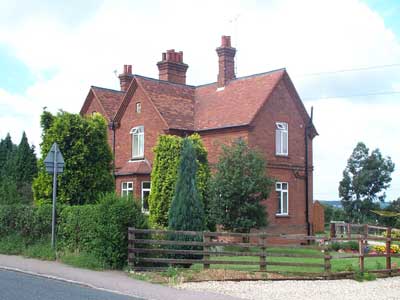

Ridgmont as a village dates back to Saxon times when the village was known as Segenhoe, and is mentioned in the Doomsday Book. The new name of Ridgmont appeared following the Norman Conquest, derived from the name 'Rougemont' or Red Hill after, it is thought, the colour of the local soil as it is sited on the Greensand Ridge. The settlement of Segenhoe is still remembered, though, with the Manor House and the ancient All Saints Church.
The village lies on the edge of the Duke of Bedford's Woburn Estate, and was mostly owned by the estate until after World War 2. Much of the villages current day look is due to the Duke's influence, who replaced many of the old cottages with new brick houses, known today as 'Duke of Bedford' houses. These are recognised by their lack of front doors which, it is said, was the wish of the Duke to prevent the tenants 'gossiping' in full view of the road.

The 'Brogborough Estate' as it became widely known also had a working mans club. This meant that people not only lived and worked together but they also socialised together, and this was how the community evolved.
Typically of that era, people rarely locked one's back door - an almost 'open-house' policy existed - where anyone and everyone would be made welcome.
The community spirit became evident when parents organised a petition which was presented to the Marston Valley Brick Company with a request for transporting the children from the 'Estate' to Ridgmont school.
With the onset of World War II and the never ending blitz over London, evacuees soon became commonplace, often with one or two families sharing one of the houses. People were known to rally together and would help each other in whatever way possible. Families had moved here for various reasons, and accepted each others background and were more tolerant of any differences.



'Restroom for Evacuees' highlights how the Baptist church tried to bring the two communities together by creating a social centre for the women evacuees.
'Hot Dinners for All' tells how the school children were provided with hot meals at lunchtime, as most lived in Brogborough and could not go home for lunch.
Finally, 'Schoolboy Gardeners Win Award' shows how the evacuated boys from Walthamstow adapted to their rural life by providing vegetables in the school allotment and winning an award for their efforts.



